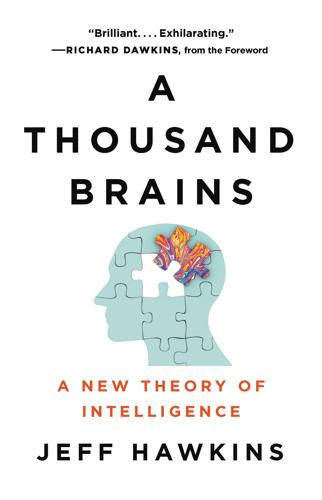
A Thousand Brains: A New Theory of Intelligence
by
Jeff Hawkins
Published 15 Nov 2021
Charles Darwin was unusual among scientists in having the means to work outside universities and without government research grants. Jeff Hawkins might not relish being called the Silicon Valley equivalent of a gentleman scientist but—well, you get the parallel. Darwin’s powerful idea was too revolutionary to catch on when expressed as a brief article, and the Darwin-Wallace joint papers of 1858 were all but ignored. As Darwin himself said, the idea needed to be expressed at book length. Sure enough, it was his great book that shook Victorian foundations, a year later. Book-length treatment, too, is needed for Jeff Hawkins’s Thousand Brains Theory. And for his notion of reference frames—“The very act of thinking is a form of movement”—bull’s-eye!
…
To find out more, go to www.hachettespeakersbureau.com or call (866) 376-6591. The publisher is not responsible for websites (or their content) that are not owned by the publisher. Library of Congress Cataloging-in-Publication Data Names: Hawkins, Jeff, 1957– author. Title: A thousand brains : a new theory of intelligence / Jeff Hawkins ; with a foreword by Richard Dawkins. Description: First edition. | New York : Basic Books, 2021. | Includes bibliographical references and index. Identifiers: LCCN 2020038829 | ISBN 9781541675810 (hardcover) | ISBN 9781541675803 (ebook) Subjects: LCSH: Brain. | Intellect. | Artificial intelligence.
…
The Universe can live and work and plan, At last made God within the mind of man. The brain sits in darkness, apprehending the outside world only through a hailstorm of Andrew Huxley’s nerve impulses. A nerve impulse from the eye is no different from one from the ear or the big toe. It’s where they end up in the brain that sorts them out. Jeff Hawkins is not the first scientist or philosopher to suggest that the reality we perceive is a constructed reality, a model, updated and informed by bulletins streaming in from the senses. But Hawkins is, I think, the first to give eloquent space to the idea that there is not one such model but thousands, one in each of the many neatly stacked columns that constitute the brain’s cortex.
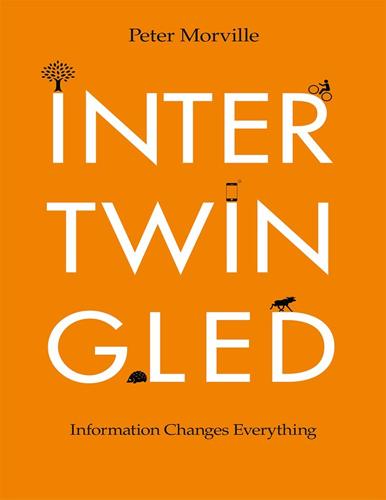
Intertwingled: Information Changes Everything
by
Peter Morville
Published 14 May 2014
Prediction helps us to see the future in more ways than one. Prediction is so pervasive that what we “perceive” – that is, how the world appears to us – does not come solely from our senses. What we perceive is a combination of what we sense and our brains’ memory-derived predictions.lxxiv As Jeff Hawkins explains, the simple act of opening a door is built on prediction. Memory enables us to open our front door without thinking. We predict what will occur when we turn the knob and push. If the door is stuck and our prediction proves wrong, then our attention turns on, and we start asking questions.
…
In vision, there’s more feedback than input. Music, management, and imagination are all about prediction. A song tickles us by surprise, managers count on cause and effect, and we dream in folded feedback, exploring the consequences of our own predictions. Anticipation is behind all we think and do. In the words of Jeff Hawkins, “Prediction is not just one of the things your brain does. It is the primary function of the neocortex and the foundation of intelligence.”lxxvi It’s impossible not to predict the future, yet we get it wrong all the time. We use our “theory of mind” to anticipate the actions and reactions of colleagues and customers, but people are full of surprises.
…
Bates (1989). lxx Information Foraging by Peter Pirolli and Stuart Card (1995). lxxi Service Design by Andy Polaine, Lavrans Lovlie, and Ben Reason (2013), p.86. lxxii On the Drucker Legacy by Robert Klitgaard (2006). lxxiii The Black Swan by Nicholas Nassim Taleb (2007), p.40. lxxiv On Intelligence by Jeff Hawkins (2004), p.87. lxxv The Tell-Tale Brain by V. S. Ramachandran (2011), p.55. lxxvi Hawkins (2004), p.89. lxxvii Teaching Smart People How to Learn by Chris Argyris (1991). lxxviii Models of My Life by Herbert Simon (1991), p.xvii. lxxix Making Sense of the Organization by Karl Weick (2001), p.195.

Drone Warfare: Killing by Remote Control
by
Medea Benjamin
Published 8 Apr 2013
And, they argue, if you can kill the leaders of a violent extremist group with precision bombs and therefore prevent a wider conflict, it’s the moral thing to do. That was certainly the consensus during a meeting I had with representatives of the State Department and the Pentagon. “There’s a war going on, and drones are the most refined, accurate and humane way to fight it,” said Jeff Hawkins from the US State Department’s Democracy and Human Rights Bureau. When asked about the anti-American backlash, he replied, “I spent three years in Pakistan. There are so many conspiracy theories and so much anti-American sentiment in that country anyway. If it wasn’t the drones, they’d simply be angry at the United States for something else.”
…
There’s going to be a massive arms race for these kind of weapons and I’m afraid the companies just won’t tolerate a ban.” Even regulations on their use would be fiercely opposed by both the weapons industry and by government authorities, especially in the US. “There would be absolutely no support in the US government for any international restrictions on the use of drones,” insisted Jeff Hawkins from the State Department’s Bureau of Democracy and Human Rights at a meeting on drones from the State Department’s Bureau of Democracy and Human Rights at a meeting on drones. “Of that you can be certain.”293 Williams thinks the best chance the international community has to curb the use of drones is to stop autonomous robotic weapons—weapons that operate independently according to pre-programmed missions—because they are not yet fully developed and because they bring up the most difficult ethical and legal questions.
…
,” Electronic Frontier Foundation, January 10, 2010. 278 “Q & A: US Targeted Killings and International Law,” Human Rights Watch, December 19, 2011. 279 Mary Ellen O’Connell, “Lawful Use of Combat Drones,” Hearing: Rise of the Drones II: Examining the Legality of Unmanned Targeting from Subcommittee on National Security and Foreign Affairs, Washington, D.C., April 28, 2010. 280 “Defense Department Does Not Compile Total Number Of Civilians Killed In Drone Attacks,” American Civil Liberties Union, March 22, 2011. 281 Chris Rogers, “REPORT: Pakistan 2010,” CIVIC: Campaign for Innocent Victims in Conflict, October 2010. 282 Maria Keenan, “PAKISTAN: Compensation Promised to Civilian Drone Victims,” CIVIC: Campaign for Innocent Victims in Conflict, March 28, 2011. 283 David Hookes, “Armed Drones: How Remote-Controlled, High-Tech Weapons are Used Against the Poor,” Scientists for Global Responsibility, Winter 2011. 284 Chris Cole, “Convenient Killing: Armed Drones and the ‘Playstation’ Mentality,” The Fellowship of Reconciliation, England, 2010. 285 “Current campaign - Drone Wars,” Fellowship of Reconciliation, England. 286 Paul McGowan, Interview by Alli McCracken, Online, December 7, 2011. 287 Jim Wright, Interview by Alli McCracken, Online, December 5, 2011. 288 “ICRAC,” ICRAC - International Committee for Robot Arms Control. 289 “ICBL - International Campaign to Ban Landmines,” ICBL. 290 “ICBL - International Campaign to Ban Landmines, ICBL. 291 Ibid. 292 Ibid. 293 Jeff Hawkins, Personal Interview by Author, Washington, D.C., November 15, 2011. 294 Peter Asaro, personal website. 295 Nick Mottern, Personal Interview by Author, Washington, D.C., January 4, 2012. 296 Tara Mckelvery, “Inside the Killing Machine,” Newsweek, February 13, 2011. 297 Ibid. 298 Noah Shachtman, “CIA Chief: Drones ‘Only Game in Town’ for Stopping Al Qaeda,” Wired, May 19, 2009. 299 David Kilcullen and Andrew McDonald Exum, “Op-Ed Contributors- Death From Above, Outrage Down Below,” The New York Times, May 17, 2009. 300 David Rohde, “Held by the Taliban - A Times Reporter’s Account.

The Singularity Is Nearer: When We Merge with AI
by
Ray Kurzweil
Published 25 Jun 2024
BACK TO NOTE REFERENCE 54 This is somewhat lower than the 300 million I estimated from older research in How to Create a Mind but, given that the underlying data is loosely approximated, it is still in the same general range. There may also be some significant variation from one person to another. BACK TO NOTE REFERENCE 55 Jeff Hawkins, Subutai Ahmad, and Yuwei Cui, “A Theory of How Columns in the Neocortex Enable Learning the Structure of the World,” Frontiers in Neural Circuits 11, no. 81 (October 25, 2017), https://doi.org/10.3389/fncir.2017.00081; Jeff Hawkins, A Thousand Brains: A New Theory of Intelligence (New York: Basic Books, 2021). BACK TO NOTE REFERENCE 56 Mountcastle, “Columnar Organization of the Neocortex”; Sporns, Tononi, and Kötter, “The Human Connectome”; Heeger, “Theory of Cortical Function.”
…
BACK TO NOTE REFERENCE 46 For an interesting talk explaining evolutionary computation, see Keith Downing, “Evolutionary Computation: Keith Downing at TEDxTrondheim,” TEDx Talks, YouTube video, November 4, 2013, https://www.youtube.com/watch?v=D3zUmfDd79s. BACK TO NOTE REFERENCE 47 For more on the development and function of the neocortex, see Kaas, “Evolution of the Neocortex”; Jeff Hawkins and Sandra Blakeslee, On Intelligence: How a New Understanding of the Brain Will Lead to the Creation of Truly Intelligent Machines (New York: Macmillan, 2007), 97–101, https://books.google.co.uk/books?id=Qg2dmntfxmQC; Clay Reid, “Lecture 3: The Structure of the Neocortex,” Allen Institute, YouTube video, September 6, 2012, https://www.youtube.com/watch?
…
BACK TO NOTE REFERENCE 50 Yasuhiro Itoh, Alexandros Poulopoulos, and Jeffrey D. Macklis, “Unfolding the Folding Problem of the Cerebral Cortex: Movin’ and Groovin’,” Developmental Cell 41, no. 4 (May 22, 2017): 332–34, https://www.sciencedirect.com/science/article/pii/S1534580717303933; Jeff Hawkins, “What Intelligent Machines Need to Learn from the Neocortex,” IEEE Spectrum, June 2, 2017, https://spectrum.ieee.org/computing/software/what-intelligent-machines-need-to-learn-from-the-neocortex. BACK TO NOTE REFERENCE 51 Jean-Didier Vincent and Pierre-Marie Lledo, The Custom-Made Brain: Cerebral Plasticity, Regeneration, and Enhancement, trans.
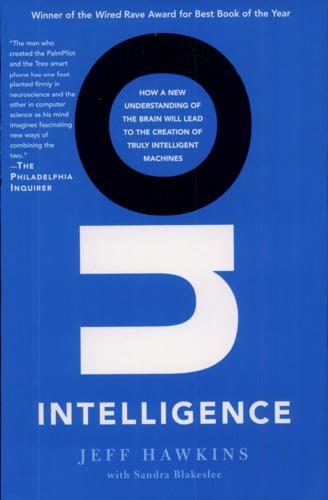
On Intelligence
by
Jeff Hawkins
and
Sandra Blakeslee
Published 1 Jan 2004
* * * On Intelligence Jeff Hawkins with Sandra Blakeslee Contents Prologue 1. Artificial Intelligence 2. Neural Networks 3. The Human Brain 4. Memory 5. A New Framework of Intelligence 6. How the Cortex Works 7. Consciousness and Creativity 8. The Future of Intelligence Epilogue Appendix: Testable Predictions Bibliography Acknowledgments On Intelligence Prologue This book and my life are animated by two passions. For twenty-five years I have been passionate about mobile computing. In the high-tech world of Silicon Valley, I am known for starting two companies, Palm Computing and Handspring, and as the architect of many handheld computers and cell phones such as the PalmPilot and the Treo.
…
I wrote a letter to Intel's chairman, Gordon Moore. The letter can be distilled to the following: Dear Dr. Moore, I propose that we start a research group devoted to understanding how the brain works. It can start with one person me and go from there. I am confident we can figure this out. It will be a big business one day. Jeff Hawkins Moore put me in touch with Intel's chief scientist, Ted Hoff. I flew to California to meet him and lay out my proposal for studying the brain. Hoff was famous for two things. The first, which I was aware of, was for his work in designing the first microprocessor. The second, which I was not aware of at the time, was for his work in early neural network theory.
…
He immediately understood the issues I would face proposing a theory of intelligence and then he suggested how the book should be written and positioned. I would like to thank my daughters, Anne and Kate, for not complaining when their dad spent many weekends at the computer keyboard. And, finally, I want to thank my wife, Janet. Being married to me can't be all that easy. I love her more than brains. About the Authors JEFF HAWKINS is one of the most successful and highly regarded computer architects and entrepreneurs in Silicon Valley. Currently the chief technology officer at palmOne, he founded Palm Computing and Handspring and created the Redwood Neuroscience Institute to promote research on memory and cognition. He is a member of the National Academy of Engineering and serves on the scientific board of Cold Spring Harbor Laboratory.

The Rise of Superman: Decoding the Science of Ultimate Human Performance
by
Steven Kotler
Published 4 Mar 2014
See: http://news.sciencemag.org/sciencenow/2012/02/video-fit-hearts-have-street-sma.html. 63 For the experiment: Laura Chaddock, Mark Neider, Michelle Voss, John Gaspar, and Arthur Kramer, “Do Athletes Excel at Everyday Tasks?” Medicine and Science in Sports and Exercise, Vol. 43, No. 10, pp. 1920–26, 2011. New York Times: Gretchen Reynolds, “How Sports May Focus the Brain,” New York Times, March 23, 2011. Jeff Hawkins and Sandra Blakeslee in On Intelligence: Jeff Hawkins and Sandra Blakeslee, On Intelligence (Times Books, 2004), p. 89. 64 the brain’s pattern-recognition system: A lot of neuroscientists are starting to believe that the basic function of the brain is pattern recognition. For a great book on the subject, see: Ray Kurzweil, How to Create a Mind: The Secret of Human Thought Revealed (Viking, 2012).
…
The new idea means the senses gather data and the brain uses that information to make predictions about what’s happening in the world before it’s happened. Imagine, for example, approaching a door. “ ‘Prediction’ means that the neurons involved in sensing your door become active in advance of them actually receiving sensory input,” writes Jeff Hawkins and Sandra Blakeslee in On Intelligence: When the sensory input does arrive, it is compared with what was expected. As you approach the door, your cortex is forming a slew of predictions based on past experience. As you reach out, it predicts what you will feel on your fingers, when you will feel the door, and at what angle your joints will be when they actually touch the door.
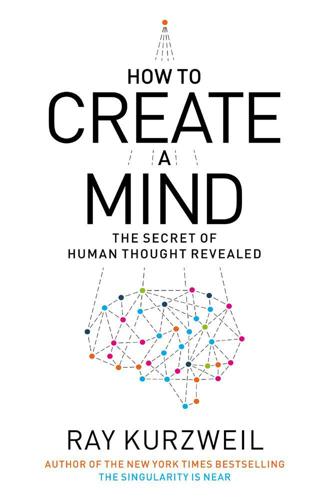
How to Create a Mind: The Secret of Human Thought Revealed
by
Ray Kurzweil
Published 13 Nov 2012
The Structure of a Pattern The pattern recognition theory of mind that I present here is based on the recognition of patterns by pattern recognition modules in the neocortex. These patterns (and the modules) are organized in hierarchies. I discuss below the intellectual roots of this idea, including my own work with hierarchical pattern recognition in the 1980s and 1990s and Jeff Hawkins (born in 1957) and Dileep George’s (born in 1977) model of the neocortex in the early 2000s. Each pattern (which is recognized by one of the estimated 300 million pattern recognizers in the neocortex) is composed of three parts. Part one is the input, which consists of the lower-level patterns that compose the main pattern.
…
Each pattern recognition module could recognize a linear sequence of patterns from a lower conceptual level. Each input had parameters for importance, size, and variability of size. There were “downward” signals indicating that a lower-level pattern was expected. I discuss this research in more detail in chapter 7. In 2003 and 2004, PalmPilot inventor Jeff Hawkins and Dileep George developed a hierarchical cortical model called hierarchical temporal memory. With science writer Sandra Blakeslee, Hawkins described this model eloquently in their book On Intelligence. Hawkins provides a strong case for the uniformity of the cortical algorithm and its hierarchical and list-based organization.
…
The actual algorithmic complexity is even less than that, as most of the 25 million bytes of genetic information pertain to the biological needs of the neurons, and not specifically to their information-processing capability. However, even 25 million bytes of design information is a level of complexity we can handle. Hierarchical Memory Systems As I discussed in chapter 3, Jeff Hawkins and Dileep George in 2003 and 2004 developed a model of the neocortex incorporating hierarchical lists that was described in Hawkins and Blakeslee’s 2004 book On Intelligence. A more up-to-date and very elegant presentation of the hierarchical temporal memory method can be found in Dileep George’s 2008 doctoral dissertation.12 Numenta has implemented it in a system called NuPIC (Numenta Platform for Intelligent Computing) and has developed pattern recognition and intelligent data-mining systems for such clients as Forbes and Power Analytics Corporation.

Machines of Loving Grace: The Quest for Common Ground Between Humans and Robots
by
John Markoff
Published 24 Aug 2015
There he finds fascinating sociological parallels between singularity thinking and a variety of messianic religious traditions.39 The singularity hypothesis also builds on the emergent AI research pioneered by Rodney Brooks, who first developed a robotics approach based on building complex systems out of collections of simpler parts. Both Kurzweil in How to Create a Mind: The Secret of Human Thought Revealed and Jeff Hawkins in his earlier On Intelligence: How a New Understanding of the Brain Will Lead to the Creation of Truly Intelligent Machines attempt to make the case that because the simple biological “algorithms” that are the basis for human intelligence have been discovered, it is largely a matter of “scaling up” to engineer intelligent machines.
…
The idea became codified in Silicon Valley in the form of the Singularity University and the Singularity Institute, organizations that focused on dealing with the consequences of that exponential acceleration. Joining Kurzweil are a diverse group of scientists and engineers who believe that once they have discovered the mechanism underlying the biological human neuron, it will be simply a matter of scaling it up to create an AI. Jeff Hawkins, a successful Silicon Valley engineer who had founded Palm Computing with Donna Dubinsky, coauthored On Intelligence in 2004, which argued that the path to human-level intelligence lay in emulating and scaling up neocortex-like circuits capable of pattern recognition. In 2005, Hawkins formed Numenta, one of a growing list of AI companies pursuing pattern recognition technologies.
…
The approach precipitated a break with McCarthy and fomented a new wave in AI: Brooks argued in favor of a design that mimicked the simplest biological systems, rather than attempting to match the capability of humans. Since that time the bottom-up view has gradually come to dominate the world of artificial intelligence, ranging from Minsky’s The Society of Mind to the more recent work of electrical engineers such as Jeff Hawkins and Ray Kurzweil, who both have declared that the path to human-level AI is to be found by aggregating the simple algorithms they see underlying cognition in the human brain. Brooks circulated his critique in a 1990 paper titled “Elephants Don’t Play Chess,”4 arguing that mainstream symbolic AI had failed during the previous thirty years and a new approach was necessary.

Adaptive Markets: Financial Evolution at the Speed of Thought
by
Andrew W. Lo
Published 3 Apr 2017
However, we have excellent reason to believe in its accuracy, because other elements of this narrative have been tested rigorously and confirmed many times over—a testament to the extraordinary power of human intelligence. This notion of intelligence as successful narrative prediction is very close to the definition proposed by Jeff Hawkins, the Palm Pilot inventor turned neuroscientist. In his book, On Intelligence, Hawkins argues that intelligence consists of two features: memory and prediction. Most of the human brain, Hawkins believes, is devoted to these two activities. The micro-anatomical structure of the human cortex, composed of millions of very regular cortical columns, each made up of a small number of neurons, reminded Hawkins of the very regular architecture of the electronic memory and logic circuits on a silicon chip.
…
By way of comparison, there are only about 2250 atoms in the observable universe, so the number of possible thoughts the human brain can conceive is greater by a factor of 285,999,999,750, a number with over 25 billion digits.35 Compared to the vast potential diversity of human thought, the difference between a drive down the Mass Pike and Einstein’s theory of special relativity is unnoticeable. The human brain can construct an effectively unlimited number of narratives—although only a vanishingly few of them will be useful. This type of calculation has long been made by computer scientists like Jeff Hawkins, especially those who study artificial intelligence. Neuroscience has fascinated computer science from the beginning of the field—the first mathematical model of the neuron was developed in 1943 by Warren McCulloch and Walter Pitts, when the first digital computers were being invented.36 The early computer scientists thought it would be easy enough to program intelligent behavior into a computer.
…
Advances in agricultural, medical, manufacturing, transportation, information, and yes, even financial technologies have all contributed to this extraordinary run of reproductive success by Homo sapiens; but without the capacity to imagine and plan, these technologies would never have been invented. How our prefrontal cortex allows us to perform these mental actions is still a mystery. It might simply be a question of scale. In Jeff Hawkins’s view, intelligence is a direct result of the expanded human neocortex increasing the memory and predictive abilities of early humans. According to Hawkins, “We got smart by adding many more elements of a common cortical algorithm,” rather like upgrading a network’s processing power by adding more and more duplicate servers.35 In Hawkins’s theory, intelligence began to emerge as more connections formed between the neocortex and the neurons responsible for bodily movement, allowing our early human ancestors to experience the selective advantage of being able to act on their predictions.

Prediction Machines: The Simple Economics of Artificial Intelligence
by
Ajay Agrawal
,
Joshua Gans
and
Avi Goldfarb
Published 16 Apr 2018
Because the output of machine learning—prediction—is a key component of intelligence, the prediction accuracy improves by learning, and the high prediction accuracy often enables machines to perform tasks that, until now, were associated with human intelligence, such as object identification. In his book On Intelligence, Jeff Hawkins was among the first to argue that prediction is the basis for human intelligence. The essence of his theory is that human intelligence, which is at the core of creativity and productivity gains, is due to the way our brains use memories to make predictions: “We are making continuous low-level predictions in parallel across all our senses.
…
Definitions from the Oxford English Dictionary. Chapter 4 1. J. McCarthy, Marvin L. Minsky, N. Rochester, and Claude E. Shannon, “A Proposal for the Dartmouth Summer Research Project on Artificial Intelligence,” August 31, 1955, http://www-formal.stanford.edu/jmc/history/dartmouth/dartmouth.html. 2. Jeff Hawkins and Sandra Blakeslee, On Intelligence (New York: Times Books, 2004), 89. 3. McCarthy et al, “A Proposal for the Dartmouth Summer Research Project on Artificial Intelligence.” 4. Ian Hacking, The Taming of Chance (Cambridge, UK: Cambridge University Press, 1990). Chapter 5 1. Hal Varian, “Beyond Big Data,” lecture, National Association of Business Economists, San Francisco, September 10, 2013. 2.

Our Final Invention: Artificial Intelligence and the End of the Human Era
by
James Barrat
Published 30 Sep 2013
So they can never be truly and verifiably “safe.” * * * But they’ll likely play a big role in AGI systems. Many researchers today believe pattern recognition—what Rosenblatt’s Perceptron aimed for—is our brain’s chief tool for intelligence. The inventor of the Palm Pilot and Handspring Treo, Jeff Hawkins, pioneered handwriting recognition with ANNs. His company, Numenta, aims to crack AGI with pattern recognition technology. Dileep George, once Numenta’s Chief Technology Officer, now heads up Vicarious Systems, whose corporate ambition is stated in their slogan: We’re Building Software that Thinks and Learns Like a Human.
…
Well, with some notable exceptions, that’s more or less the state of affairs right now, and even so, AGI research is moving steadily ahead. Consider how Goertzel’s OpenCog stays afloat. Parts of its architecture are up and running, and busily analyzing biological data and solving power grid problems, for a fee. Profits go back into research-and-development for OpenCog. Numenta, Inc., brainchild of Jeff Hawkins, the creator of the Palm Pilot and Treo, earns its living by working inside electrical power supplies to anticipate failures. For about a decade, Peter Voss developed his AGI company, Adaptive AI, in “stealth” mode, widely lecturing about AGI but not revealing how he planned to tackle it. Then in 2007 he launched Smart Action, a company that uses Adaptive AI’s technology to empower Virtual Agents.
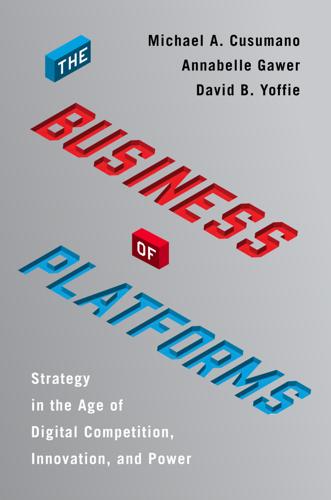
The Business of Platforms: Strategy in the Age of Digital Competition, Innovation, and Power
by
Michael A. Cusumano
,
Annabelle Gawer
and
David B. Yoffie
Published 6 May 2019
Complementors often need technical and financial support from the platform owner. An important challenge for some platforms, especially new platforms, is the difficulty of identifying precisely which complementors to support. For example, Numenta—an artificial intelligence platform founded in 2005 by Jeff Hawkins and Donna Dubinsky—struggled for ten years trying to figure out who were the most promising complementors. Despite an abundance of inquiries, it was never clear what might become the “killer app” for this platform and who would build it.2 Numenta licensed its technology to some organizations and the open-source software community, but it has remained small, with few active complementors and only around two dozen employees.3 TRANSACTION PLATFORMS Transaction platforms, such as Amazon Marketplace, Google Search, Facebook, Alibaba’s Taobao, Uber, Lyft, and Airbnb, are online marketplaces that enable the exchange of goods, services, and information.
…
CHAPTER 3: STRATEGY AND BUSINESS MODELS: INNOVATION, TRANSACTION, OR HYBRID 1.See Jonathan Wareham, Paul Fox, and Josep Lluis Cano Giner, “Technology Ecosystem Governance,” Organization Science 25, no. 4 (July–August 2014); and Geoffrey Parker, Marshall Van Alstyne, and Sangeet Paul Choudary, Platform Revolution: How Platform Markets Are Transforming the Economy and How to Make Them Work for You (New York: W. W. Norton, 2016). 2.David B. Yoffie, Liz Kind, and David Ben Shimol, “Numenta: Inventing and (or) Commercializing AI” (Boston: Harvard Business School Publishing, Case #9-716-469, July 2018). 3.Also see Cade Metz, “Jeff Hawkins Is Finally Ready to Explain His Brain Research,” New York Times, October 14, 2018. 4.David S. Evans and Richard Schmalensee, Matchmakers: The New Economics of Multisided Platforms (Boston: Harvard Business Review Press, 2016). 5.Annabelle Gawer and Michael A. Cusumano, “How Companies Become Platform Leaders,” MIT Sloan Management Review 49, no. 2 (Winter 2008): 28–35. 6.Thales Teixeira and Morgan Brown, “Airbnb, Etsy, Uber: Acquiring the First Thousand Customers” (Boston: Harvard Business School Publishing, Case #9-516-094, January 2018). 7.David S.
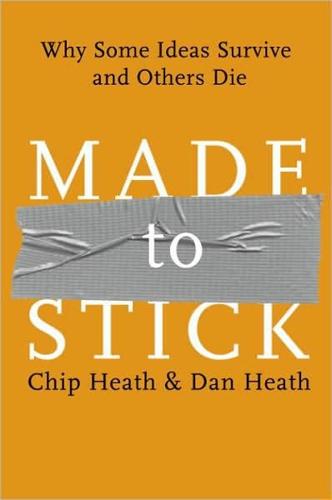
Made to Stick: Why Some Ideas Survive and Others Die
by
Chip Heath
and
Dan Heath
Published 18 Dec 2006
When the team began its work, in the early 1990s, personal digital assistants (PDAs) had an unblemished record of failure. Apple’s famous debacle with its Newton PDA had made other competitors gun-shy. One of the competitors on the PDA market in 1994 looked like a malnourished computer. It was a bulky device with a keyboard and multiple ports for peripherals. Jeff Hawkins, the Palm Pilot team leader, was determined that his product would avoid this fate. He wanted the Palm Pilot to be simple. It would handle four things: calendars, contacts, memos, and task lists. The Palm Pilot would do only four things, but it would do them well. Hawkins fought feature creep by carrying around a wooden block the size of the Palm.
…
More Villains There are two other key villains in the book that the Stanford students don’t have to wrestle with. The first is decision paralysis—the anxiety and irrationality that can emerge from excessive choice or ambiguous situations. Think about the students who missed both a fantastic lecture and a great film because they couldn’t decide which one was better, or how hard it was for Jeff Hawkins, the leader of the Palm Pilot development group, to get his team to focus on a few issues rather than on many. To beat decision paralysis, communicators have to do the hard work of finding the core. Lawyers must stress one or two points in their closing arguments, not ten. A teacher’s lesson plans may contain fifty concepts to share with her students, but in order to be effective that teacher must devote most of her efforts to making the most critical two or three stick.

The Myth of Artificial Intelligence: Why Computers Can't Think the Way We Do
by
Erik J. Larson
Published 5 Apr 2021
Rather than challenge the science that is occurring in neuroscience today, Data Brain advocates are increasingly willing to hand off mysteries and weaknesses to the supposed magic of data AI. It’s to these neocortical theories we turn next. Chapter 17 NEOCORTICAL THEORIES OF HUMAN INTELLIGENCE A popular theory of intelligence has been put forth by computer scientist, entrepreneur, and neuroscience advocate Jeff Hawkins. Famous for developing the Palm Pilot and as an all-around luminary in Silicon Valley, Hawkins dipped his toe into the neuroscience (and artificial intelligence) waters in 2004 with the publication of On Intelligence, a bold and original attempt to summarize the volumes of neuroscience data about thinking in the neocortex with a hierarchical model of intelligence.1 He has since formed a company, Numenta, dedicated to unlocking the secrets of intelligence as computation.
…
Ibid. 13. Gary Marcus and Ernest Davis, “Eight (No Nine!) Problems with Big Data,” New York Times, April 6, 2014. 14. Nate Silver, The Signal and the Noise: Why So Many Predictions Fail—But Some Don’t (New York: Penguin Books, 2015). Chapter 17: Neocortical Theories of Human Intelligence 1. Jeff Hawkins, On Intelligence: How a New Understanding of the Brain Will Lead to the Creation of Truly Intelligent Machines (New York: St. Martin’s Griffin, 2005). 2. Ray Kurzweil, How to Create a Mind: The Secret of Human Thought Revealed (New York: Penguin Books, 2013), 35. 3. Gary Marcus, “Ray Kurzweil’s Dubious New Theory of Mind,” New Yorker, November 15, 2012. 4.
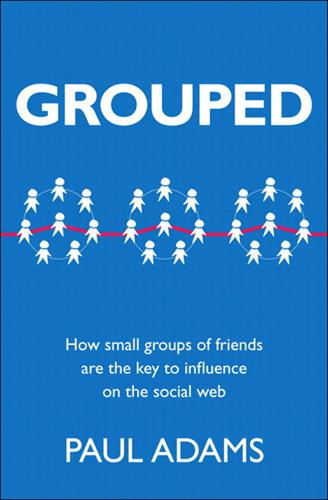
Grouped: How Small Groups of Friends Are the Key to Influence on the Social Web
by
Paul Adams
Published 1 Nov 2011
For more on brain patterns, see Susan Weinschenk’s book 100 Things Every Designer Needs to Know About People (New Riders Press, 2011). 3. See the 2001 research paper “Predictability modulates human brain response to reward” by Gregory Berns and others. 4. For more information about the memory-prediction framework of the brain, see the book On Intelligence by Jeff Hawkins (Times Books, 2004). 5. See the research work done by Ap Dijksterhuis. Start with the 2009 research paper “The rational unconscious: Conscious versus unconscious thought in complex consumer choice.” 6. See the 2011 research paper “Should I go with my gut? Investigating the benefits of emotion-focused decision making” by researchers at DePaul University, and the 2006 article “A theory of unconscious thought” by Ap Dijksterhuis and Loran Nordgren.

Genius Makers: The Mavericks Who Brought A. I. To Google, Facebook, and the World
by
Cade Metz
Published 15 Mar 2021
Viewing the technology from the same vantage point, he, too, saw where it was headed. But in pitching the idea to Larry Page, he gave it an extra flourish. As much as he was shaped by the work of Geoff Hinton, he was also the product of a 2004 book titled On Intelligence, written by a Silicon Valley engineer, entrepreneur, and self-taught neuroscientist named Jeff Hawkins. Hawkins invented the PalmPilot, a forerunner of the iPhone from the 1990s, but what he really wanted to do was study the brain. In his book he argued that the whole of the neocortex—the part of the brain that handled sight, hearing, speech, and reason—is driven by a single biological algorithm.
…
CHAPTER 5: TESTAMENT the Google self-driving car: John Markoff, “Google Cars Drive Themselves, in Traffic,” New York Times, October 9, 2010, https://www.nytimes.com/2010/10/10/science/10google.html. He soon married another roboticist: Evan Ackerman and Erico Guizz, “Robots Bring Couple Together, Engagement Ensues,” IEEE Spectrum, March 31, 2014, https://spectrum.ieee.org/automaton/robotics/humanoids/engaging-with-robots. a 2004 book titled On Intelligence: Jeff Hawkins with Sandra Blakeslee, On Intelligence: How a New Understanding of the Brain Will Lead to the Creation of Truly Intelligent Machines (New York: Times Books, 2004). Jeff Dean walked into the same microkitchen: Gideon Lewis-Kraus, “The Great AI Awakening,” New York Times Magazine, December 14, 2006, https://www.nytimes.com/2016/12/14/magazine/the-great-ai-awakening.html.
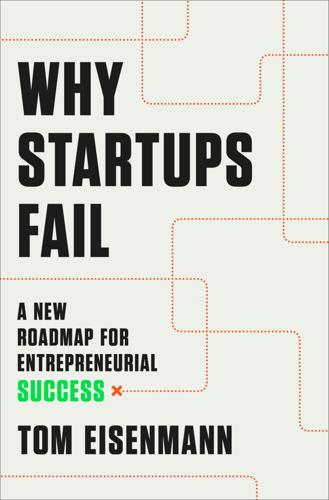
Why Startups Fail: A New Roadmap for Entrepreneurial Success
by
Tom Eisenmann
Published 29 Mar 2021
A prototype is any representation of a design idea, ranging from low to high fidelity. A higher-fidelity prototype is closer to the envisioned final product in terms of its functionality, its “look and feel,” or both. A low-fidelity prototype can be as simple as a series of sketches that depict the flow of screens along a software program’s navigation path. Jeff Hawkins, inventor of the PalmPilot, famously started designing the device by carving a block of wood into its shape, and then trimming a chopstick that he used as a stylus. To get a feel for whether and how he might use a PalmPilot, he carried the prototype for weeks, pulling it out every time he needed to schedule a meeting or access contact information.
…
The best way to synthesize: For best practices when developing personas, see Goodman et al., Observing the User Experience, Ch. 17; and Alan Cooper, The Inmates Are Running the Asylum: Why High-Tech Products Drive Us Crazy and How to Restore the Sanity (Carmel, IN: Sams-Pearson Education, 2004). Also known as structured ideation: For best practices when brainstorming, see Scott Berkun, “How to Run a Brainstorming Session,” Scott Berkun blog; and Tina Seelig, “Brainstorming—Why It Doesn’t (Always) Work,” Medium, Jan. 8, 2017. Jeff Hawkins, inventor: Alberto Savoia, “The Palm Pilot Story,” Medium, Mar. 2, 2019. Early in the solution development process: The distinction between “works like” vs. “looks like” prototypes is a widely accepted principle in design. For a good explanation of the distinction—and why designers should use both types—see Ben Einstein, “The Illustrated Guide to Product Development (Part 2: Design),” Bolt website, Oct. 20, 2015.

The Master Algorithm: How the Quest for the Ultimate Learning Machine Will Remake Our World
by
Pedro Domingos
Published 21 Sep 2015
If something exists but the brain can’t learn it, we don’t know it exists. We may just not see it or think it’s random. Either way, if we implement the brain in a computer, that algorithm can learn everything we can. Thus one route—arguably the most popular one—to inventing the Master Algorithm is to reverse engineer the brain. Jeff Hawkins took a stab at this in his book On Intelligence. Ray Kurzweil pins his hopes for the Singularity—the rise of artificial intelligence that greatly exceeds the human variety—on doing just that and takes a stab at it himself in his book How to Create a Mind. Nevertheless, this is only one of several possible approaches, as we’ll see.
…
A multilayer perceptron is a passable model of the cerebellum, the part of the brain responsible for low-level motor control, but the cortex is another story. It’s missing the backward connections needed to propagate errors, for one, and yet it’s where the real learning wizardry resides. In his book On Intelligence, Jeff Hawkins advocated designing algorithms closely based on the organization of the cortex, but so far none of these algorithms can compete with today’s deep networks. This may change as our understanding of the brain improves. Inspired by the human genome project, the new field of connectomics seeks to map every synapse in the brain.
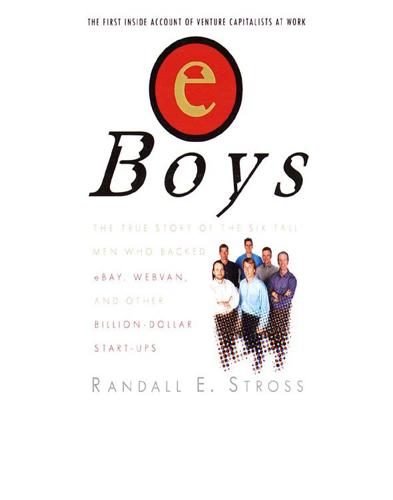
eBoys
by
Randall E. Stross
Published 30 Oct 2008
During that summer in 1998—and due undoubtedly to some extent to the consciousness-raising experience of the Priceline debates—the others came around to Beirne’s position that for some must-do franchise deals, the potential upside did render risks irrelevant, and in those cases price should be no object. By the early fall, Dunlevie was nonchalantly advocating, and getting unanimously supportive votes for, an investment in a seed deal, Handspring, which planned to design and build a new handheld computer for the mass market but which had no employees other than the two people behind the Palm, Jeff Hawkins and Donna Dubinsky, and was at a $60 million post- valuation. It was deemed a we’ve-got-to-do-it deal, a category that had never existed before. Afterward, every time Beirne heard another one of those ubiquitous Priceline commercials on the radio, he would have to grip the wheel hard so as not to run off the road.
…
Marissa Matusich, Bernadette Wagner, and Kerri McClain met my many requests for assistance with unflagging good cheer. Renee Beaulaurier, Lisa Chew, and Suzette Phillips also showed me kind consideration. Many generous individuals provided interviews: Tom Adams, Gary Bengier, Louis Borders, Gary Dahl, Lawton Fitt, Mark Gainey, Eric Greenberg, John Hagan, Jeff Hawkins, David Hayden, Bob Howe, Bill Lee, Peggy Lo, Burt McMurtry, Bob Moog, Pete Mountanos, Pierre Omidyar, Alan Seiler, Danny Shader, Rob Shaw, Mike Shirkey, Jeff Skoll, Jennifer Sun, Stu Weisman, Steve Westly, Meg Whitman, Curt Wozniak, and George Zachary. In Flint, Michigan, Vivian Corlew and Michele Kagle generously shared family memories.

Advances in Artificial General Intelligence: Concepts, Architectures and Algorithms: Proceedings of the Agi Workshop 2006
by
Ben Goertzel
and
Pei Wang
Published 1 Jan 2007
So, there is some good common sense in approaching AGI by trying to emulate brain function. Now, there is also a major problem with this approach, which is that we don’t currently understand human brain function very well. Some parts of the brain are understood better than others; for example, Jeff Hawkins’ [16] AI architecture is closely modeled on the visual cortex, which is one of the best-understood parts of the human brain. At P. Wang and B. Goertzel / Introduction: Aspects of Artificial General Intelligence 13 the current time, rather than focusing on constructing neural net AGI systems based on neuroscience knowledge, De Garis is focused on developing tools for constructing small neural networks that may serve as components of such AGI systems.
…
Essentially, one may construct a hierarchical perception network (a subnetwork of Novamente’s overall Atom network) in which each node refers to a certain localized region of spacetime, with the children of a node corresponding to the subregions of the region the node corresponds to. One may then carry out conjunctive mining within each local node of the hierarchical perception network. Philosophically, this hierarchical perception approach displays significant similarities to Jeff Hawkins’ [13] hierarchical perception architecture, though without his attempts at neurological justification. Hawkins’ architecture relies on a combination of neural net activation spreading and Bayesian network based probabilistic calculations. On the other hand, in Novamente, we may spread attention between nodes in the perception network using economic attention allocation (similar to Hawkins’ neural net activation spreading); and we may update the probabilities of conjunctions at various levels in the hierarchy using PLN probabilistic inference, which is ultimately just a different rearrangement of the mathematics used in Bayes nets (though PLN’s arrangement of probability theory has significantly more general applicability).

Start Small, Stay Small: A Developer's Guide to Launching a Startup
by
Rob Walling
Published 15 Jan 2010
Serial implies “one after another” Parallel implies “at the same time” You may have heard the term serial entrepreneur floating around the business press. This is typically used to describe someone who starts a startup, grows it, sells it, and moves on to the next one. Marc Andreessen was a co-founder of Netscape, followed by Opsware, Ning, and now a venture capital fund. He is a good example of this, as are Jeff Hawkins and Donna Dubinsky, founders of Palm, Handspring and now Numenta. But the challenge as a startup entrepreneur is that you can’t start two companies at once. Starting a company requires enormous amounts of effort and time, and can’t be done in parallel. There’s no other way but to start one, sell it or close it down, then move on to the next.

The Social Animal: The Hidden Sources of Love, Character, and Achievement
by
David Brooks
Published 8 Mar 2011
If you want to get a sense of the number of potential connections between the cells in Harold’s brain, contemplate this: A mere 60 neurons are capable of making 1081 possible connections with each other. (That’s 1 with 81 zeroes after it.) The number of particles in the known universe is about one-tenth of this number. Jeff Hawkins suggests a different way to think about the brain. Imagine a football stadium filled with spaghetti. Now imagine it shrunk down to skull size and much more complicated. In their book The Scientist in the Crib, Gopnik, Meltzoff, and Kuhl have a nice description of the process neurons use to connect with one another: “It’s as if, when you used your cell phone to call your neighbor often enough, a cable spontaneously grew between your houses.
…
Schwartz and Sharon Begley, The Mind and the Brain: Neuroplasticity and the Power of Mental Force (New York: HarperCollins, 2002), 117. 13 Harold could end up Schwartz and Begley, 111. 14 A mere 60 neurons Thomas Carlyle Dalton and Victor W. Bergenn, Early Experience, the Brain, and Consciousness: An Historical and Interdisciplinary Synthesis (New York: Lawrence Erlbaum Associates, 2007), 91. 15 Imagine a football stadium Jeff Hawkins and Sandra Blakeslee, On Intelligence (New York: Times Books, 2004), 34. 16 “It’s as if” Gopnik, Meltzoff, and Kuhl, 185. 17 a cat was taught Bruce E. Wexler, Brain and Culture: Neurobiology, Ideology, and Social Change (Cambridge, MA: MIT Press, 2006), 23. 18 In another experiment James Le Fanu, Why Us?

Army of None: Autonomous Weapons and the Future of War
by
Paul Scharre
Published 23 Apr 2018
The fear that AI could one day develop to the point where it threatens humanity isn’t shared by everyone who works on AI. It’s hard to dismiss people like Stephen Hawking, Bill Gates, and Elon Musk out of hand, but that doesn’t mean they’re right. Other tech moguls have pushed back against AI fears. Steve Ballmer, former CEO of Microsoft, has said AI risk “doesn’t concern me.” Jeff Hawkins, inventor of the Palm Pilot, has argued, “There won’t be an intelligence explosion. There is no existential threat.” Facebook CEO Mark Zuckerberg has said that those who “drum up these doomsday scenarios” are being “irresponsible.” David Brumley of Carnegie Mellon, who is on the cutting edge of autonomy in cybersecurity, similarly told me he was “not concerned about self-awareness.”
…
.’”: Ibid. 241 AI risk “doesn’t concern me”: Sharon Gaudin, “Ballmer Says Machine Learning Will Be the next Era of Computer Science,” Computerworld, November 13, 2014, http://www.computerworld.com/article/2847453/ballmer-says-machine-learning-will-be-the-next-era-of-computer-science.html. 241 “There won’t be an intelligence explosion”: Jeff Hawkins, “The Terminator Is Not Coming. The Future Will Thank Us,” Recode, March 2, 2015, https://www.recode.net/2015/3/2/11559576/the-terminator-is-not-coming-the-future-will-thank-us. 241 Mark Zuckerberg: Alanna Petroff, “Elon Musk Says Mark Zuckerberg’s Understanding of AI Is ‘Limited,’ “ CNN.com, July 25, 2017. 241 “not concerned about self-awareness”: David Brumley, interview, November 24, 2016. 242 “has been completely contradictory”: Stuart Armstrong, interview, November 18, 2016. 242 poker became the latest game to fall: Olivia Solon, “Oh the Humanity!
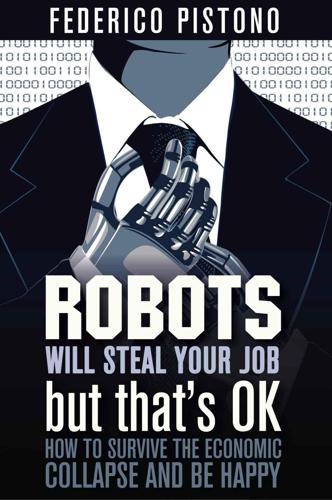
Robots Will Steal Your Job, But That's OK: How to Survive the Economic Collapse and Be Happy
by
Pistono, Federico
Published 14 Oct 2012
http://picardfacepalm.com/ http://en.wikipedia.org/wiki/Facepalm 29 Intelligence Without Reason, Rodney A. Brooks, 1991. Massachusetts Institute Of Technology Artificial Intelligence Laboratory. http://people.csail.mit.edu/brooks/papers/AIM-1293.pdf 30 On Intelligence: How a New Understanding of the Brain will Lead to the Creation of Truly Intelligent Machines, Jeff Hawkins, 2004; The Emotion Machine: Commonsense Thinking, Artificial Intelligence , and the Future of the Human Mind, Marvin Minsky, 2006 31 The example is taken from The Lights in the Tunnel: Automation, Accelerating Technology and the Economy of the Future, Martin Ford, 2009. CreateSpace. pp.64-67. 32 “In reality, there is another factor that might slow the adoption of full automation in Radiology: that is malpractice liability.
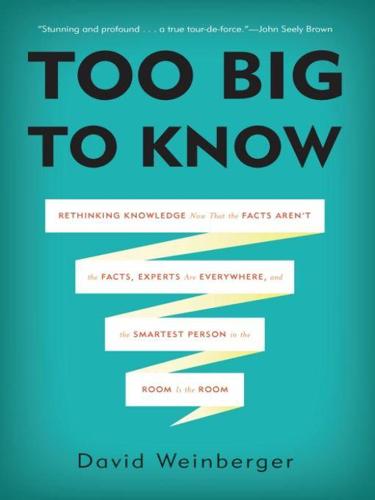
Too Big to Know: Rethinking Knowledge Now That the Facts Aren't the Facts, Experts Are Everywhere, and the Smartest Person in the Room Is the Room
by
David Weinberger
Published 14 Jul 2011
Where are the amateurs—the Darwins and Mendels—who are influencing science through the sort of contributions that credentialed scientists themselves make? The amateurs’ articles tend not to make it into scientific journals, and they tend not to be invited to give talks at scientific conferences. Yes, there are some exceptions—Jeff Hawkins’s theory of brain function,32 Ray Kurzweil on the biology of aging, Stephen Wolfram’s theory of everything—but they tend to be crossovers from technical or scientific fields in which they’ve been highly trained. It seems that amateurs had a bigger effect on the ideas of science in the nineteenth century than they’re having in the Age of the Net.

Dogfight: How Apple and Google Went to War and Started a Revolution
by
Fred Vogelstein
Published 12 Nov 2013
It never got built, though Kay went on to do something arguably even more important. He became one of the inventors of the graphical user interface at Xerox PARC. The first Macintosh and later Microsoft Windows were rooted in Kay’s work. Apple prototyped something it called the Bashful in 1983 but never released it. The first tablet to get any consumer traction came from Jeff Hawkins, the entrepreneur behind the PalmPilot in the late 1990s. He built the GRiDPad from Tandy, which was released in 1989. It worked with a stylus, weighed about five pounds, and cost about $2,500. Bookkeepers in the U.S. army used it to fill out electronic forms and keep better track of inventory.
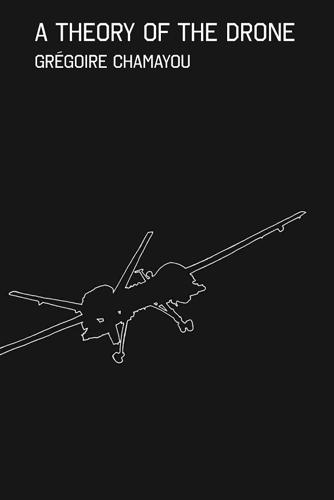
A Theory of the Drone
by
Gregoire Chamayou
Published 23 Apr 2013
The project is nothing less than a dynamiting of the law of armed conflict as it was established in the second half of the twentieth century: an evisceration of the principles of international law in favor of a nationalism of self-preservation. And, as we shall see, that is also the primary principle of the necroethics of drones. 15 A Humanitarian Weapon There’s a war going on and drones are the most refined, accurate and humane way to fight it. —Jeff Hawkins, U.S. State Department, Bureau of Democracy, Human Rights, and Labor We never said to ourselves, “Let’s build a more humane weapon.” —Henry A. Crumpton, CIA, Counterterrorism Center The partisans of the hunter-killer drone claim that it represents “a major step forward . . . in humanitarian technology.”1 By this they do not mean that this machine could, for example, be used to deliver food or medicines to devastated areas.

The Charisma Myth: How Anyone Can Master the Art and Science of Personal Magnetism
by
Olivia Fox Cabane
Published 1 Mar 2012
Serna, “Dispelling the Illusion of Invulnerability: The Motivations and Mechanisms of Resistance to Persuasion,” Journal of Personality and Social Psychology 83, no. 3 (2002): 526–41 8. Hunt, Pragmatic Thinking and Learning. 5. Creating Charismatic Mental States 1. David Rock, Your Brain at Work (New York: HarperBusiness, 2009) 2. Ibid., and Jeff Hawkins, On Intelligence, adapted ed. (New York: Times Books, 2004). 3. On a scale of suicides per 100,000 since 1990, MIT had a rate of 10.2, compared to Harvard with a rate of 7.4, and Johns Hopkins, the third-place school, with a rate of 6.9. 4. R. A. Emmons and A. Mishra, “Why Gratitude Enhances Well-Being: What We Know, What We Need to Know,” in Designing Positive Psychology: Taking Stock and Moving Forward, eds.
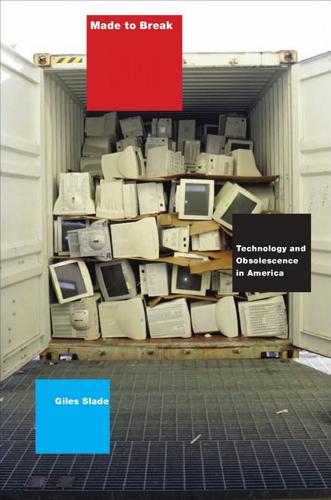
Made to Break: Technology and Obsolescence in America
by
Giles Slade
Published 14 Apr 2006
Unit costs for calculators shrank to insignifican e, and the brightest lights of the semiconductor fi ms moved on to newer challenges in and around Silicon Valley—at the Stanford Research Institute (SRI), Xerox-PARC, Apple Computers,and Atari.A quarter of a century later,when Palm Pilot inventor Jeff Hawkins left Palm to found Handspring, he described his decision as analogous to this shift in the calculator industry: “The organizer business is going to be like calculators. There is still a calculator business but who wants to be in it? They’re cheap, and sort of the backwater of consumer electronics.”30 Palm’s founder was contemptuous of calculators because they had become low-cost complimentary giveaways at the local credit union.
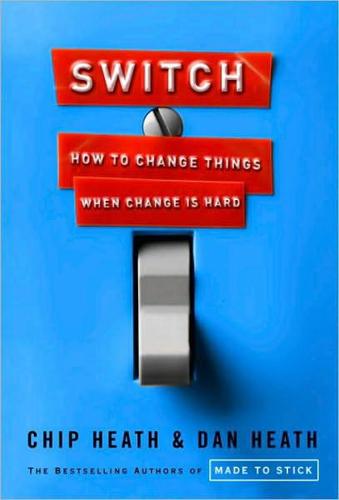
Switch: How to Change Things When Change Is Hard
by
Chip Heath
and
Dan Heath
Published 10 Feb 2010
When the team began its work, in the early 1990s, personal digital assistants (PDAs) had an unblemished record of failure. Apple’s famous debacle with its Newton PDA had made other competitors gun-shy. One of the competitors on the PDA market in 1994 looked like a malnourished computer. It was a bulky device with a keyboard and multiple ports for peripherals. Jeff Hawkins, the Palm Pilot team leader, was determined that his product would avoid this fate. He wanted the Palm Pilot to be simple. It would handle four things: calendars, contacts, memos, and task lists. The Palm Pilot would do only four things, but it would do them well. Hawkins fought feature creep by carrying around a wooden block the size of the Palm.

Driverless: Intelligent Cars and the Road Ahead
by
Hod Lipson
and
Melba Kurman
Published 22 Sep 2016
This is why if life were completely logical, writing mid-level control software would be a straightforward task. Instead, on any given busy street corner in any given city, a rich and steady stream of novel corner cases will elude definition. Clearly, although we take it for granted, we humans have mastered the art of perception. In his landmark book On Intelligence, Palm founder Jeff Hawkins describes a long-standing puzzle that has confounded philosophers and machine vision researchers alike: invariant representation. We humans are equipped with a mental model that enables us to consistently recognize objects, even when they appear to us in an unfamiliar context, or that we view from a new angle.
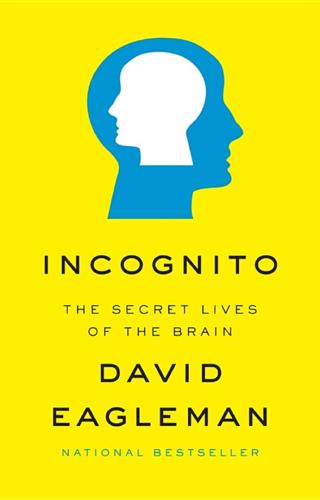
Incognito: The Secret Lives of the Brain
by
David Eagleman
Published 29 May 2011
When everything is going according to the needs and skills of your zombie systems, you are not consciously aware of most of what’s in front of you; when suddenly they cannot handle the task, you become consciously aware of the problem. The CEO scrambles around, looking for fast solutions, dialing up everyone to find who can address the problem best. The scientist Jeff Hawkins offers a nice example of this: after he entered his home one day, he realized that he had experienced no conscious awareness of reaching for, grasping, and turning the doorknob. It was a completely robotic, unconscious action on his part—and this was because everything about the experience (the doorknob’s feel and location, the door’s size and weight, and so on) was already burned down into unconscious circuitry in his brain.

Possible Minds: Twenty-Five Ways of Looking at AI
by
John Brockman
Published 19 Feb 2019
He is the founder of the international literary and software agency Brockman, Inc. and lives in New York City. * Omohundro, “The Basic AI Drives,” in Proceedings of the First AGI Conference, 171; and in P. Wang, B. Goertzel, and S. Franklin, ed., Artificial General Intelligence (Amsterdam, The Netherlands: IOS Press, 2008). * AI researcher Jeff Hawkins, for example, writes, “Some intelligent machines will be virtual, meaning they will exist and act solely within computer networks. . . . It is always possible to turn off a computer network, even if painful,” https://www.recode.net/2015/3/2/11559576/. * The AI100 report (Peter Stone et al.), sponsored by Stanford University, includes the following: “Unlike in the movies, there is no race of superhuman robots on the horizon or probably even possible,” https://ai100.stanford.edu/2016-report
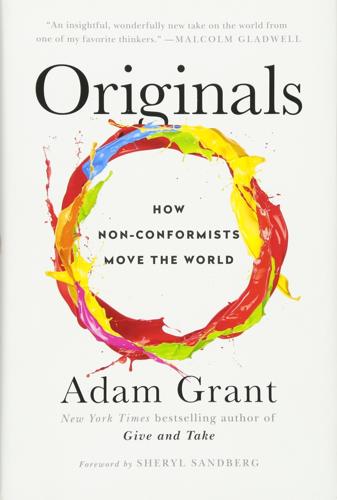
Originals: How Non-Conformists Move the World
by
Adam Grant
Published 2 Feb 2016
When Apple refused to spin Claris off as an independent company in 1991, Dubinsky was so frustrated with the lack of opportunity for impact that she quit. She jetted to Paris for a yearlong sabbatical and took up painting, contemplating ways to contribute to a bigger mission. When she met an entrepreneur named Jeff Hawkins, she decided that his startup, Palm Computing, was the next big wave of technology, and accepted a position as CEO. Under Dubinsky’s leadership, the startup developed the PalmPilot, the first runaway success in the fledgling market for personal digital devices. The PalmPilot was released in 1996 and, within a year and a half, sold over a million units.
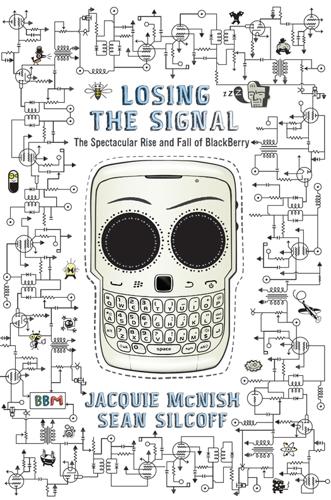
Losing the Signal: The Spectacular Rise and Fall of BlackBerry
by
Jacquie McNish
and
Sean Silcoff
Published 6 Apr 2015
“It amazes me that the company took 18 months to develop this device and yet failed to match some of the key things that made the RIM so popular,” he wrote in early 2002.7 The California company returned to its roots in 2003, acquiring an inventive smartphone start-up called Handspring, which happened to be owned by Jeff Hawkins and Donna Dubinsky, Palm’s founder and former CEO, respectively. The major rival in the 2000 mobile data market was Motorola. The Chicago two-way radio maker had grown into a diversified global communications company with $38 billion in annual sales. It ranked second behind Nokia in global cellphone sales and was a formidable force in semiconductor, paging, walkie-talkie, and network equipment markets.

Radical Technologies: The Design of Everyday Life
by
Adam Greenfield
Published 29 May 2017
See rednuht.org/genetic_cars_2/. 76.August C. Bourré, Comment, Speedbird blog, May 28, 2014, speedbird.wordpress.com/2014/05/28/weighing-the-pros-and-cons-of-driverless-cars/#comment-23389. 77.David Z. Morris, “Trains and Self-Driving Cars, Headed for a (Political) Collision,” Fortune, November 2, 2014. 9Artificial intelligence 1.Jeff Hawkins, keynote speech, “Why Can’t a Computer Be More Like a Brain? How a New Theory of Neocortex Will Lead to Truly Intelligent Machines,” O’Reilly Emerging Technology Conference 2007, San Diego, CA, March 27, 2007. 2.The Next Rembrandt project, nextrembrandt.com. 3.David Silver et al., “Mastering the Game of Go with Deep Neural Networks and Tree Search,” Nature, Volume 529, Issue 7587, pp. 484–9, January 28, 2016. 4.Younggil An and David Ormerod, Relentless: Lee Sedol vs Gu Li, Go Game Guru, 2016. 5.Nature Video, “The Computer That Mastered Go,” January 27, 2016, YouTube.com. 6.Ormerod, David.

Fire in the Valley: The Birth and Death of the Personal Computer
by
Michael Swaine
and
Paul Freiberger
Published 19 Oct 2014
Their product, the EO Personal Communicator, didn’t take the world by storm, but it did solve a lot of technical problems, and to those in the industry it was at least a proof of concept. Another personal-computer pioneer who believed in the possibility of these no-keyboard devices was VisiCalc designer Dan Bricklin. In 1990 he and some colleagues founded Slate Corporation with a mission of developing software for pen-based computers. Then Jeff Hawkins, who had worked at GRiD, started Palm Computing in 1992 to develop handheld devices that were not necessarily computers. He and his team had varying degrees of success with personal digital assistants, smartphones, handwriting-recognition software called Graffiti, and a mobile operating system called WebOS.

Going Clear: Scientology, Hollywood, and the Prison of Belief
by
Lawrence Wright
Published 17 Jan 2013
Broyles, Jr. 27 “It’s really remarkable to me”: Interview with Paul Haggis. 28 He accompanied the star: Headley, Blown for Good, p. 118. 29 “It was a joke”: Interview with Tommy Davis, who said Haggis “apologized profusely.” 30 funded a school: Jana Winter, “Will Smith Funds Private Scientology School,” FoxNews.com, May 30, 2008. 31 Cruise called a meeting: Reitman, Inside Scientology, p. 289. 32 Erika Christensen: www.zimbio.com/Erika+Christensen/articles/3/Surprising+Celebrity+Scientologist+9+Erika. 33 No one had been more instrumental: Reitman, Inside Scientology, p. 266. 34 “Have a good show”: Interview with Allen Barton. 35 “Scientological McCarthyism”: Allen Barton letter to Jenna Elfman, June 1, 2004. 36 After Cruise rallied the: Interviews with Tom McCafferty and Art Cohan. 37 Katselas refused: Interviews with Art Cohan and Allen Barton. 38 Miscavige even wondered: Morton, Tom Cruise, p. 337. 39 “He’d say that Tom Cruise”: Jeff Hawkins, quoted in Reitman, Inside Scientology, p. 290. 40 “Miscavige convinced Cruise”: Rathbun, The Scientology Reformation, p. 77. 41 “He didn’t have”: Interview with Marshall Herskovitz. 42 “Well, John, if you have powers”: Interview with Josh Brolin. Travolta, through a lawyer, agreed that the incident with Brando occurred, but characterized it as “tabloid-esque.” 43 The cook was summarily sent: Lana Mitchell, personal correspondence. 44 “At Flag”: Interview with Mark “Marty” Rathbun. 45 showed him how to shoot: Ibid. 46 “I am writing this public announcement”: Marty Rathbun, “Public Announcement,” Sept. 28, 2003.
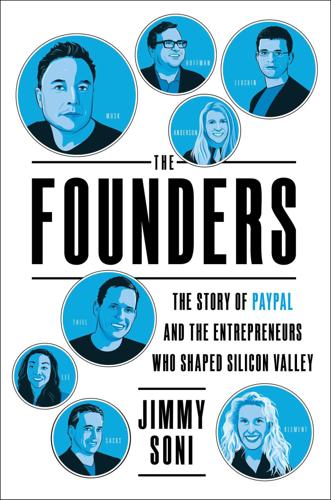
The Founders: The Story of Paypal and the Entrepreneurs Who Shaped Silicon Valley
by
Jimmy Soni
Published 22 Feb 2022
He had also befriended Griff Coleman, Palm’s product manager for enterprise solutions. Levchin’s goal: get Palm to change its codebase to support Levchin’s security software. At one point, Levchin pulled a daring attempt at cold outreach. He attended a developer conference at 3Com’s office, and he followed Palm CEO Jeff Hawkins outside after Hawkins finished his conference keynote. Levchin approached him and asked for a ride home. Hawkins agreed, believing Levchin to be a stranded 3Com employee. Levchin gave vague directions in order to lengthen the ride, but a few confusing turns later, Hawkins had reached the limits of politeness, asking, “Can I just drop you off here?”